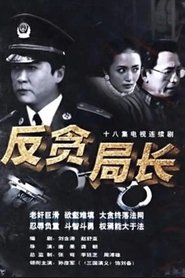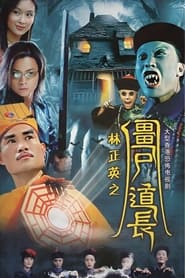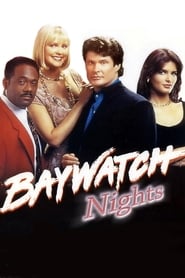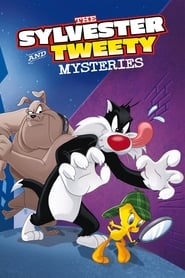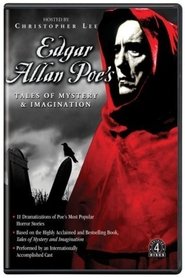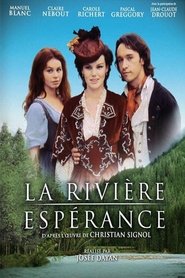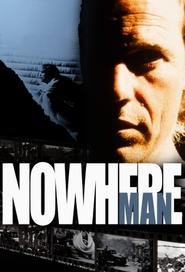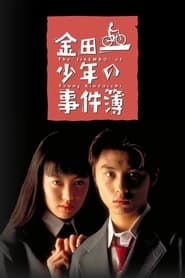New Mystery TV Shows on Pantaflix - Page 312
-
The Demon Headmaster
1996
The Demon Headmaster
1996
star 6.5The Demon Headmaster is a British television series based on the children's books by Gillian Cross of the same name. Made for CBBC, the drama was first broadcast between 1996 and 1998. The first series contained six episodes, and aired twice weekly from 2 to 18 January 1996, the second series contained seven episodes, and aired once a week from 25 September to 6 November 1996, and the third series contained six episodes, and aired twice weekly from 6 to 22 January 1998. School location scenes in the first series were filmed at Hatch End High School, in Hatch End, Harrow, North West London and The Royal Masonic School for Girls in Rickmansworth, Hertfordshire. Other scenes were filmed around West London and the Vulcan Tower is in fact the Atrium building in Uxbridge. CGI was used to make this building appear on a traffic island close to Warwick Avenue tube station. Some scenes in the later series were filmed in the village of Sarratt, Hertfordshire and other locations in Hertfordshire and Buckinghamshire. -
Affaires de famille
1996
Affaires de famille
1996
-
反贪局长
1996
反贪局长
1996
-
Draculův švagr
1996
-
Kumokiri Nizaemon
1995
Kumokiri Nizaemon
1995
A Japanese television jidaigeki that was broadcast in prime-time in 1995 on Fuji TV. It is based on Shōtarō Ikenami's novel of the same title and stars Tsutomu Yamazaki. In the Kyōhō period, there was a group of bandits called Kumokiri from the people of Edo. Tokugawa shogunate appoints Abe Shikibu a head post of the Hitsuke Tōzoku Aratamegata to arrest Kumokiri clan. -
L'avocate
1995
-
Goosebumps
1995
Goosebumps
1995
star 7.9Anything can turn spooky in this horror anthology series based on the best-selling books by master of kid horror, R.L. Stine. In every episode, see what happens when regular kids find themselves in scary situations, and how they work to confront and overcome their fears. -
School Ghosts
1995
-
Vampire Expert
1995
Vampire Expert
1995
star 8Zhang Tian-shi's 18th generation disciple, Mao Xiao-fang, heads south to Hong Kong to track down the zombie king. Along the way, he meets Yang Fei-yun, a master of numerology and fortune-telling. Mao gains recognition for his exceptional Taoist abilities, which attracts jealousy from the head of the Seven Sisters Hall, Chung Kwan. Chung is bitter enemies with Mao, but her younger brother Chung Pong, a prodigious student, takes Mao as his teacher. Mao is unaware that Yang is a cunning and treacherous scoundrel. Yang tricks him into a trap, and eventually becomes the Great Demon King. Chung Pong sacrifices his relationship with his lover, Yuh Pak-sum, to become a great Taoist and help Mao defeat Yang. -
Baywatch Nights
1995
Baywatch Nights
1995
star 6.2Baywatch Nights is an American police and science fiction drama series that aired in syndication from 1995 to 1997. Created by Douglas Schwartz, David Hasselhoff, and Gregory J. Bonann, the series is a spin-off from the popular television series, Baywatch. -
Night Voices
1995
Night Voices
1995
star 8.5A group of young people get in touch with an occultist sect which has been active since before W.W.II. -
Nancy Drew
1995
Nancy Drew
1995
star 7.3Nancy Drew is a curious and fiercely independent 20-year old criminology student whose consummate passion is sloving mysteries. -
Strange Luck
1995
Strange Luck
1995
star 8Strange Luck is an American television series, starring D. B. Sweeney in the role of Chance Harper, a freelance photographer afflicted with a bizarre tendency to always be in the wrong place at the right time. As Chance himself says, "If I go to a restaurant, somebody chokes. If I walk into a bank, it gets robbed." Harper's strange luck began when, as a small child, he was the sole survivor of a plane crash that killed everyone else aboard, including both of his parents. -
The Sylvester & Tweety Mysteries
1995
star 6.5Sylvester and Tweety help out when Granny opens a detective agency. -
Tales of Mystery and Imagination
1995
star 5Horror stories by Edgar Allen Poe dramatized and introduced by horror actor Sir Christopher Lee. -
La Rivière Espérance
1995
La Rivière Espérance
1995
star 3La Rivière Espérance is a French TV series, 9 episodes of 90 minutes each, directed by Josée Dayan based on the novel by Christian Signol and shown in 1995 on France 2. -
Nowhere Man
1995
Nowhere Man
1995
star 7.7Thomas Veil is a documentary photographer who, in the course of one evening, seemingly has his whole existence erased... -
Resort to Murder
1995
Resort to Murder
1995
-
The Files of the Young Kindaichi
1995
star 7.6A young man who showed little promise while a high school student becomes a master detective, just like his grandfather. -
نفوس معقدة
1995
نفوس معقدة
1995
 Netflix
Netflix
 Amazon Prime Video
Amazon Prime Video
 Apple iTunes
Apple iTunes
 Apple TV Plus
Apple TV Plus
 Disney Plus
Disney Plus
 Google Play Movies
Google Play Movies
 Paramount Plus
Paramount Plus
 Hulu
Hulu
 HBO Max
HBO Max
 YouTube
YouTube
 fuboTV
fuboTV
 Peacock
Peacock
 Peacock Premium
Peacock Premium
 Amazon Video
Amazon Video
 The Roku Channel
The Roku Channel
 AMC+
AMC+
 Kocowa
Kocowa
 Hoopla
Hoopla
 The CW
The CW
 Vudu
Vudu
 Starz
Starz
 Showtime
Showtime
 PBS
PBS
 Pantaflix
Pantaflix
 FXNow
FXNow
 Tubi TV
Tubi TV
 Kanopy
Kanopy
 Comedy Central
Comedy Central
 Crunchyroll
Crunchyroll
 Microsoft Store
Microsoft Store
 Redbox
Redbox
 Sun Nxt
Sun Nxt
 ABC
ABC
 DIRECTV
DIRECTV
 Crackle
Crackle
 Fandor
Fandor
 Plex
Plex


